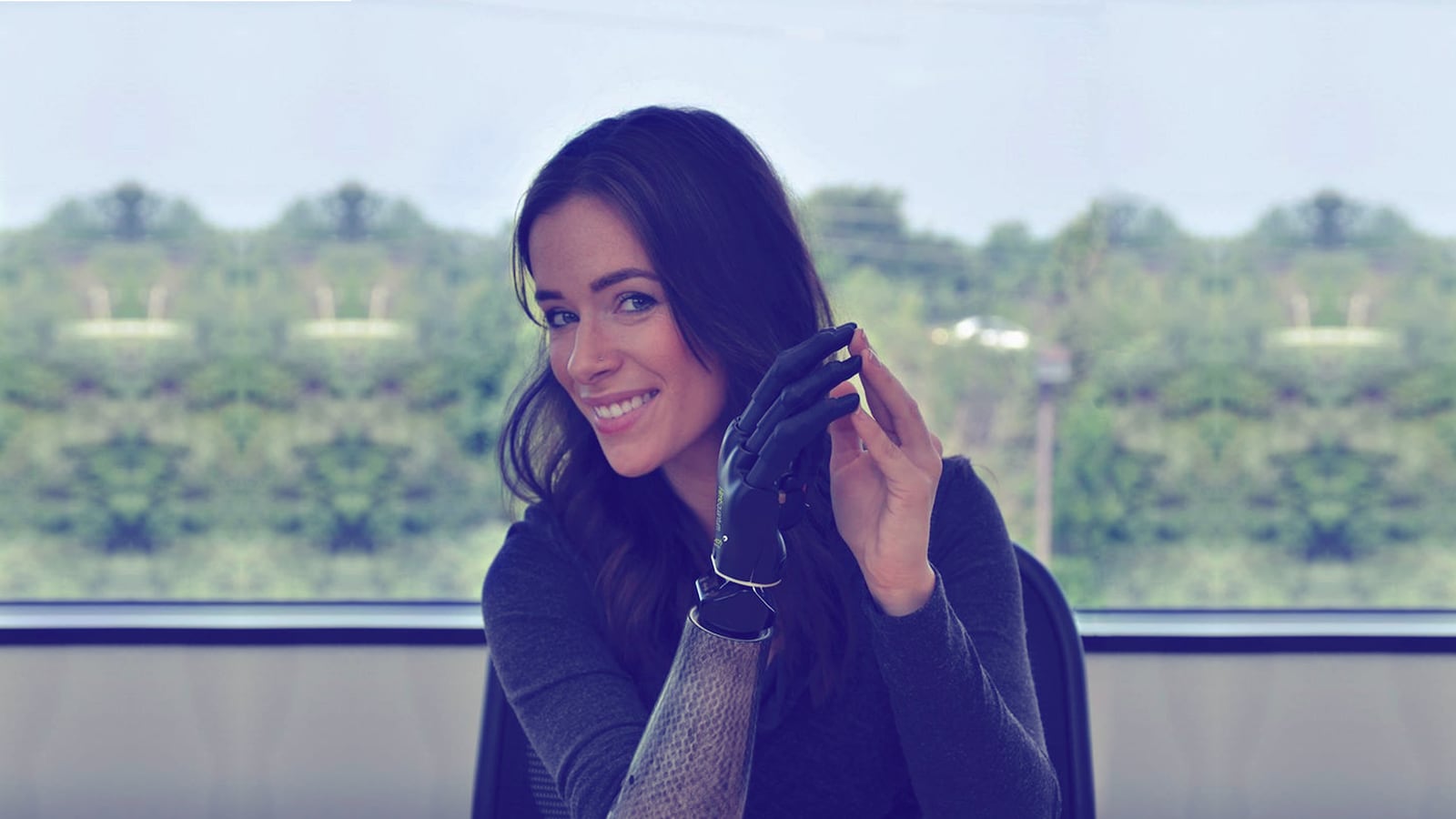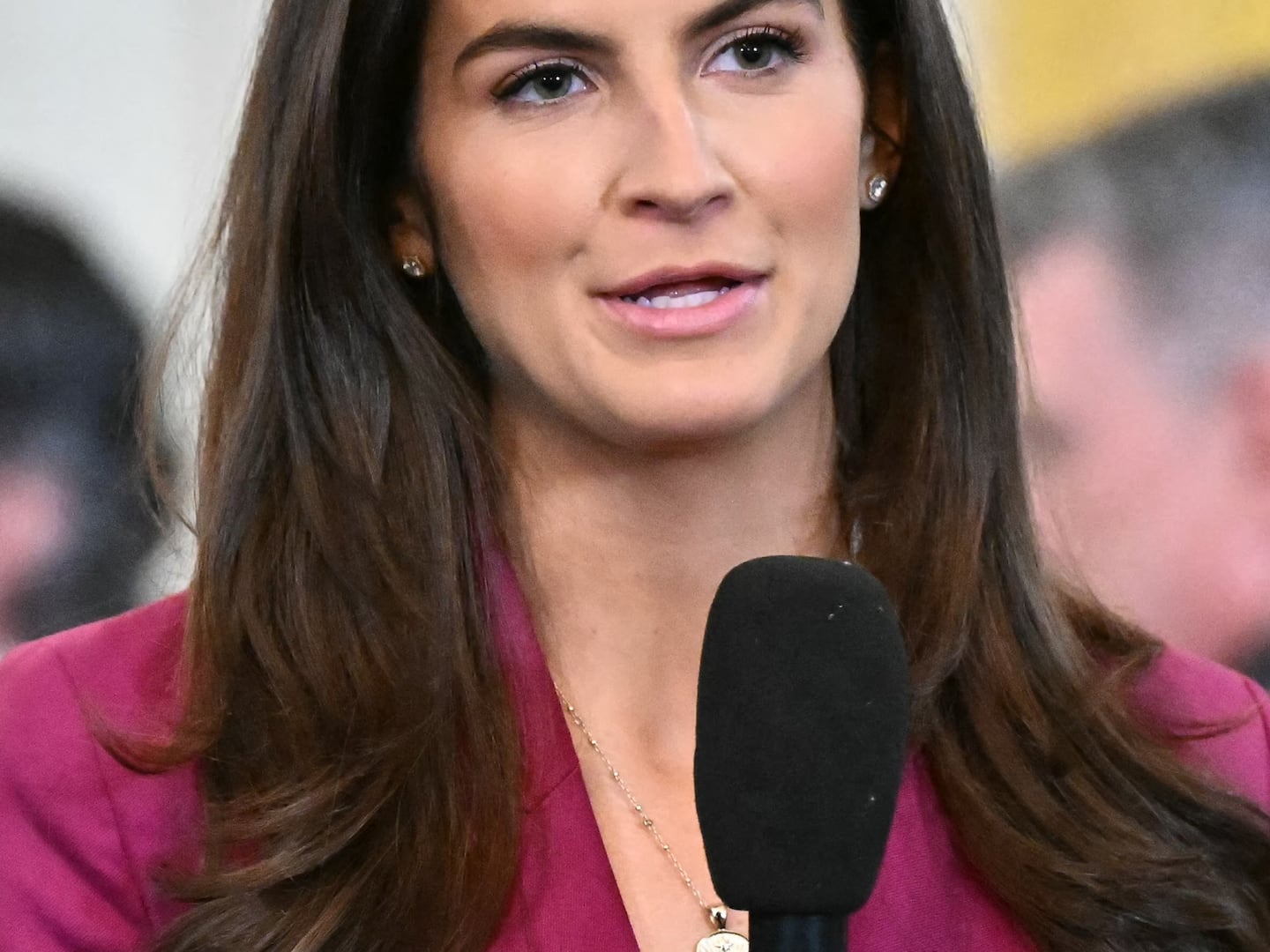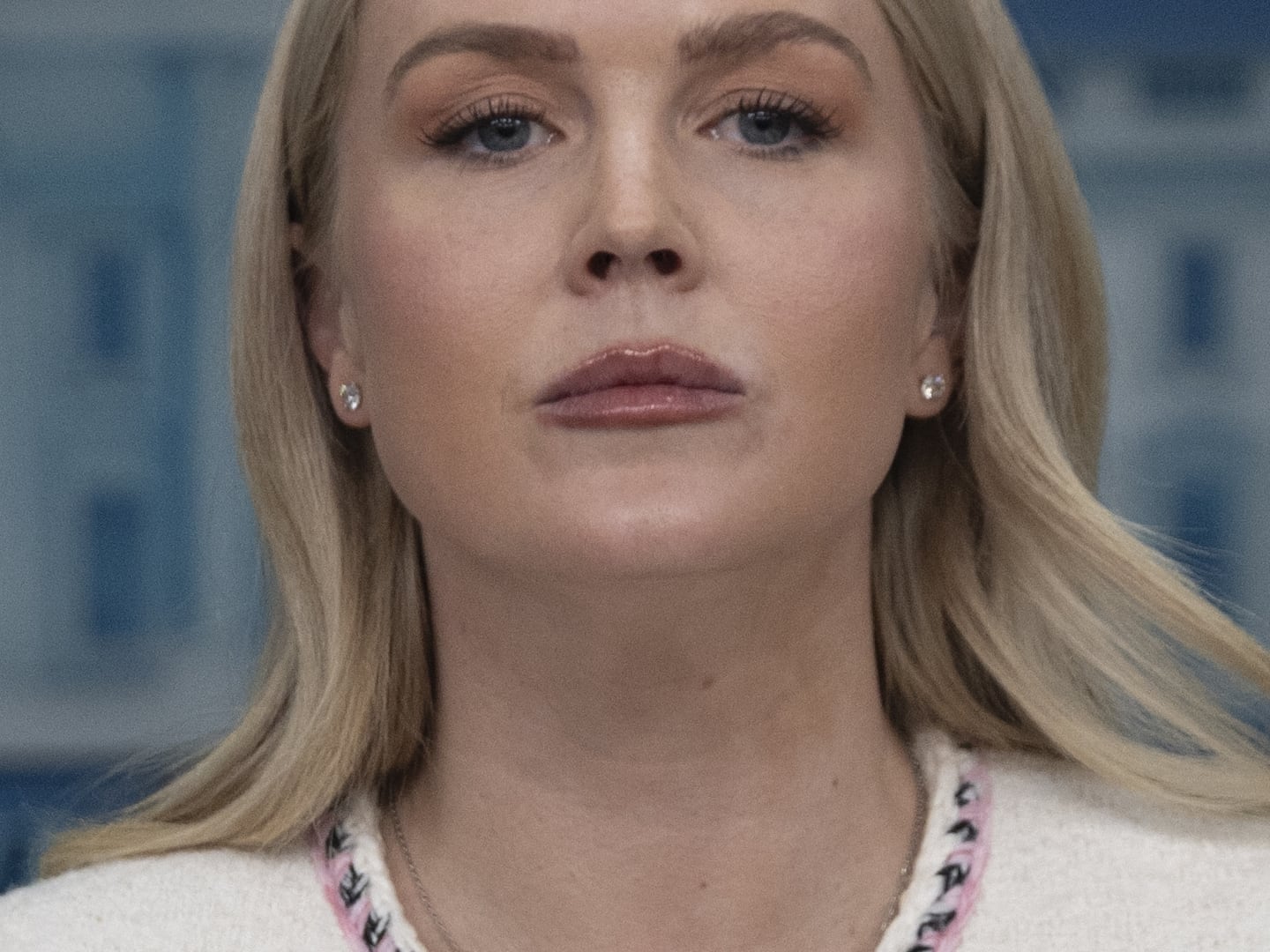Rebekah Marine is different from the many models gracing the catwalks at New York’s Fashion Week.
She works full-time for a car dealership. She didn’t even begin building her modeling portfolio until she was 22 (over-the-hill by industry standards). And she lives in oft-maligned New Jersey.
Also, she has a bionic arm, specifically an i-limb quantum prosthetic hand.
While most models hitting the runway for NYFW have spent their time and energy trying to stand apart from the endless stream of twigs to catch casting directors eyes, Marine knows she’s different—and not always considered so in the good way.
Born with “limb difference” (technically known as Symbrachydactyly), the 28-year-old brunette beauty has lived her whole life without a right forearm. Growing up in the Garden State, Marine says her physical “disability” was never an issue with her classmates, friends, or family. But that changed when she decided she wanted to walk the runway.
“As a kid, I always wanted to model. I really enjoyed being in front of the camera. I was really such a ham,” Marine tells the Daily Beast.
Then, she started going on auditions—and getting a lot of fast rejections.
“I didn’t fully understand why they [casting agents] wouldn’t consider me as a model. It became challenging for me to grasp that the idea they really wouldn’t take me seriously. It never really dawned on me. Then, towards high school, I started to realize, ‘Okay, hey, I am different,’” she says. “That’s when I started to shy away from the camera.”
Instead, Marine hit the books. She graduated from Rowan University in Glasboro, New Jersey and began a full-time job doing internet sales for a car dealership—a job she still holds to this day, she says.
Modeling dreams had been pushed aside for Marine until she began looking into a prosthetic arm at the age of 22.
Although she had worn a mechanical prosthetic in elementary school, she found it “too challenging,” according to her website.
But when she decided to get fitted for a new one as a young adult, it was ultimately the first step towards the NYFW runway.
“I was looking into new options, and one of my friends mentioned, ‘Hey, you have a really beautiful face. Maybe model it [the prosthetic] and you could be a spokesperson for a company some day,’” Marine recalls.
This suggestion sparked a revival of her old dreams. Once Marine received her new prosthetic arm, she set up a photoshoot with a local photographer and started building her portfolio. In 2013, she signed with Models of Diversity, a group that helps models with disabilities get matched with designers and shoots.
And, fulfilling her friend’s suggestion, she did become a spokesperson for a prosthetics company, Touch Bionics.
But Marine says her “big break” came when modeling for FTL MODA this past February in her first New York Fashion Week. Then came a photoshoot for Nordstrom and another call from FTL MODA that she was wanted for her second NYFW runway show.
“This year has been absolutely wonderful to me,” she says. “I feel like it’s starting to break those barriers a little bit.”
Marine is not the only model at NYFW breaking those barriers.
Madeline Stuart, an 18-year-old model with Down Syndrome from Brisbane, Australia, will walk the FTL MODA runway alongside Marine on Sunday. Like Marine, Stuart has been championed for breaking the typical model molds.
Today, Marine dreams of modeling for Dolce & Gabbana and Marc by Marc Jacobs. “Those are the two designers I would really love to walk for some day,” she says. “Hopefully, they’ll give me the chance.”
What does Marine think led to this warmer reaction, so different from her first stab at modeling?
“I think people are tired of seeing the same old 5’9”, skinny, perfect model,” Marine says. “I think people really want to see diversity in these fashion shows and diversity in models in general when you see ads. I think that’s the next chapter in the industry.”
Still, models like Marine and Stuart who do break the mold are sadly too few.
I ask Marine if she is worried that she is being touted as some exotic object or a token.
“I hope not,” she says, without any trace of concern in her voice. “I really enjoy modeling, but if this is a one-time thing, I’d be happy to say I did it and continue to be a role model for kids.”
Modeling and serving as a brand ambassador for Touch Bionics is currently occupying Marine’s time more than romance. I ask if she’s seeing someone. “No. Too busy,” she laughs.
And there is another new responsibility on Marine’s plate. She has started giving talks to children and parents of children with limb difference, recently visiting a chapter of Camp No Limits, a camp specifically for children with limb loss, in Maryland.
By all accounts, Marine is an inspiration to young girls who, like she, dreamed of a life on the runway but failed to find role models who physically resembled them.
Yet, Marine says the most prejudice she has actually encountered as a model is from those who accuse her of hiding her limb difference or “disability.”
“I get people who see me wearing the prosthesis, and they write comments like, ‘Oh, you should be proud of who you are. You don’t need to wear a prosthesis,’” Marine says, then adding. “I try not to read the comments.”
While she believes these people may be well-intentioned, they’re missing the point of prosthetics in her life. “I don’t wear it because I’m ashamed. I wear it because it’s a great tool I have in my life.”
Marine describes ordinary activities that a person without limb loss would certainly take for granted, like eating a cup of yogurt.
“For me, it's difficult because I have to hold the cup up against my body to eat, but now I can hold the cup of yogurt in my prosthetic hand and be able to put the spoon in it,” she explains. “There are just these simple things you would never think about.”
She doesn’t mind if her prosthetic brings her attention and questions.
“I remember going to a music festival a couple of months ago. Someone approached me and wanted to shake my bionic hand. Within minutes, I had a line of people who wanted to shake my bionic hand. That was a really fun and cool experience,” Marine says.
Unlike other runway models who eschew media and fans to hide away in elite clubs and parties, Marine is eager to talk because she is eager to educate.
“I want people to open up about it because it shouldn’t be such a whispered topic. It shouldn’t be something people just stare at. I’d rather people say, ‘Hey, what happened?’ and ask me questions than just stare,” she says.
In fact, Marine is so determined to end the stigma surrounding prosthetics and limb loss that she says talks more about her struggles than she ever did to her friends. “I probably spoke to the press about my struggles before I spoke to my friends. I started opening up about what it felt like being different.”
It’s part of a larger goal of Marine’s, one she hopes to fulfill when her limited time on the runway (“Obviously, time is against me,” she says of the fast-aging industry) has come to a close.
“I can’t model forever, but I really would like to turn this into being a role model for people.”
She already is.






